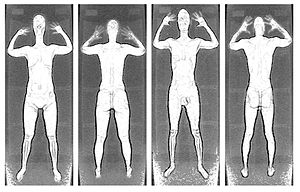ScienceDaily: Top Environment News |
- How tadpoles re-grow their tails: Implications for human healing
- What did our ancestors look like? Hair and eye color can be determined for ancient human remains
- Scientists reassemble the backbone of earliest four-legged animals using synchrotron X-rays
- Genome of diamondback moth provides new clues for sustainable pest management
- Gas that triggers ozone destruction revealed
| How tadpoles re-grow their tails: Implications for human healing Posted: 13 Jan 2013 05:11 PM PST Scientists have made a surprising finding after studying how tadpoles re-grow their tails which could have big implications for research into human healing and regeneration. |
| What did our ancestors look like? Hair and eye color can be determined for ancient human remains Posted: 13 Jan 2013 05:11 PM PST A new method of establishing hair and eye color from modern forensic samples can also be used to identify details from ancient human remains, finds a new study. The HIrisPlex DNA analysis system was able to reconstruct hair and eye color from teeth up to 800 years old, including the Polish General Wladyslaw Sikorski (1881 to 1943) confirming his blue eyes and blond hair. |
| Scientists reassemble the backbone of earliest four-legged animals using synchrotron X-rays Posted: 13 Jan 2013 11:49 AM PST Scientists have been able to reconstruct, for the first time, the intricate three-dimensional structure of the backbone of early tetrapods, the earliest four-legged animals. High-energy X-rays and a new data extraction protocol allowed the researchers to reconstruct the backbones of the 360 million year old fossils in exceptional detail and shed new light on how the first vertebrates moved from water onto land. |
| Genome of diamondback moth provides new clues for sustainable pest management Posted: 13 Jan 2013 11:49 AM PST Chinese scientists have decoded the first genome of diamondback moth, providing new clues for sustainable pest management. |
| Gas that triggers ozone destruction revealed Posted: 13 Jan 2013 11:48 AM PST Scientists have made a significant discovery about the cause of the destruction of ozone over oceans. |
| You are subscribed to email updates from ScienceDaily: Top Environment News To stop receiving these emails, you may unsubscribe now. | Email delivery powered by Google |
| Google Inc., 20 West Kinzie, Chicago IL USA 60610 | |


